Riyadh calls in best offers for King Salman airport
28 August 2025

Saudi Arabia’s King Salman International Airport Development Company (KSIADC) has invited contractors to submit their best and final offers for the first phase of Terminal 6 and the Iconic Terminal at King Salman International airport (KSIA) in Riyadh.
Contractors have until 31 August to submit their proposals.
KSIADC, which is backed by Saudi sovereign wealth vehicle, the Public Investment Fund, plans to deliver the package on an early contractor involvement (ECI) basis.
The ECI process requires selected contractors to submit methodologies for the project and a design proposal.
In July, MEED exclusively reported that several contractor consortiums submitted proposals by 17 July for a contract to develop the first phase of Terminal 6 and the Iconic Terminal at KSIA.
KSIADC first issued the tender in April this year.
It is understood that the client will select four groups in total – two for the Iconic Terminal and two for Terminal 6.
In May, MEED reported that US firm Bechtel Corporation had been appointed as the delivery partner for the terminals at KSIA.
Bechtel will manage the delivery of three new terminals, including the terminal for commercial carriers, Terminal 6 for low-cost carriers and a new private aviation terminal with hangars.
This was followed by an announcement by another US-based firm, Parsons Corporation, confirming its appointment as the delivery partner for the airside and landside packages at KSIA.
In February, MEED exclusively reported that KSIADC had received prequalification statements from firms on 28 January for the terminal project package.
The client prequalified firms in September 2024 for the main engineering, procurement and construction packages; early and enabling works; specialist systems and integration; materials and equipment; engineering and design; professional services; health, safety, security, environment and wellbeing services; modular installation and prefabrication; environmental, social and governance services; local content; and other services.
The entire scheme is divided into eight assets. These are:
- Iconic Terminal
- Terminal 6
- Private aviation terminal
- Central runway and temporary apron
- Hangars
- Landside transport
- Cargo buildings
- Real estate
In August last year, KSIADC confirmed that it had signed up several architectural and design firms for the various elements of the project.
KSIADC said that UK-based Foster+Partners will design the airport’s masterplan, including the terminals, six runways and a multi-asset real estate area.
US-based engineering firm Jacobs will provide specialist consultancy services for the masterplan and the design of the new runways.
The client also confirmed the appointment of UK-based engineering firm Mace for the delivery partner role on the project.
The airspace design consultancy contract was awarded to local firm Nera.
Project scale
The project covers an area of about 57 square kilometres (sq km), allowing for six parallel runways, and will include the existing terminals at King Khalid International airport. It will also include 12 sq km of airport support facilities, residential and recreational facilities, retail outlets and other logistics real estate.
If the project is completed on time in 2030, it will become the world’s largest operating airport in terms of passenger capacity, according to UK analytics firm GlobalData.
The airport aims to accommodate up to 120 million passengers by 2030 and 185 million by 2050. The goal for cargo is to process 3.5 million tonnes a year by 2050.
Saudi Arabia plans to invest $100bn in its aviation sector. Riyadh’s Saudi Aviation Strategy, announced by the General Authority of Civil Aviation, aims to triple Saudi Arabia’s annual passenger traffic to 330 million travellers by 2030.
It also aims to increase air cargo traffic to 4.5 million tonnes and raise the country’s total air connections to more than 250 destinations.
Exclusive from Meed
-
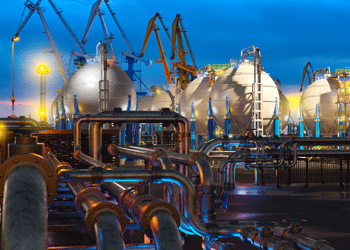 Gulf LNG sector enters a new prolific phase
Gulf LNG sector enters a new prolific phase24 October 2025
-
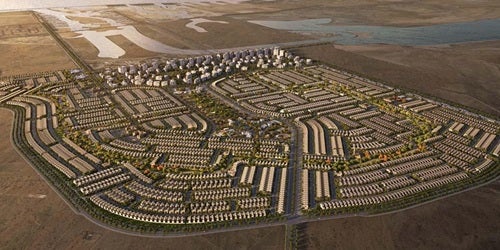 NHC signs Al-Fursan project deal with South Korean firm
NHC signs Al-Fursan project deal with South Korean firm24 October 2025
-
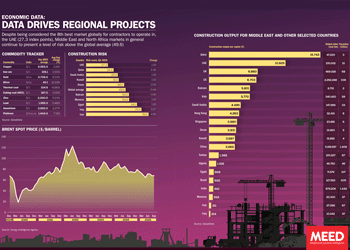 October 2025: Data drives regional projects
October 2025: Data drives regional projects24 October 2025
-
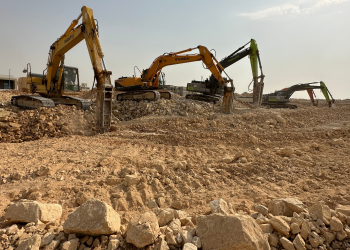 Oman tenders industrial city infrastructure contracts
Oman tenders industrial city infrastructure contracts24 October 2025
-
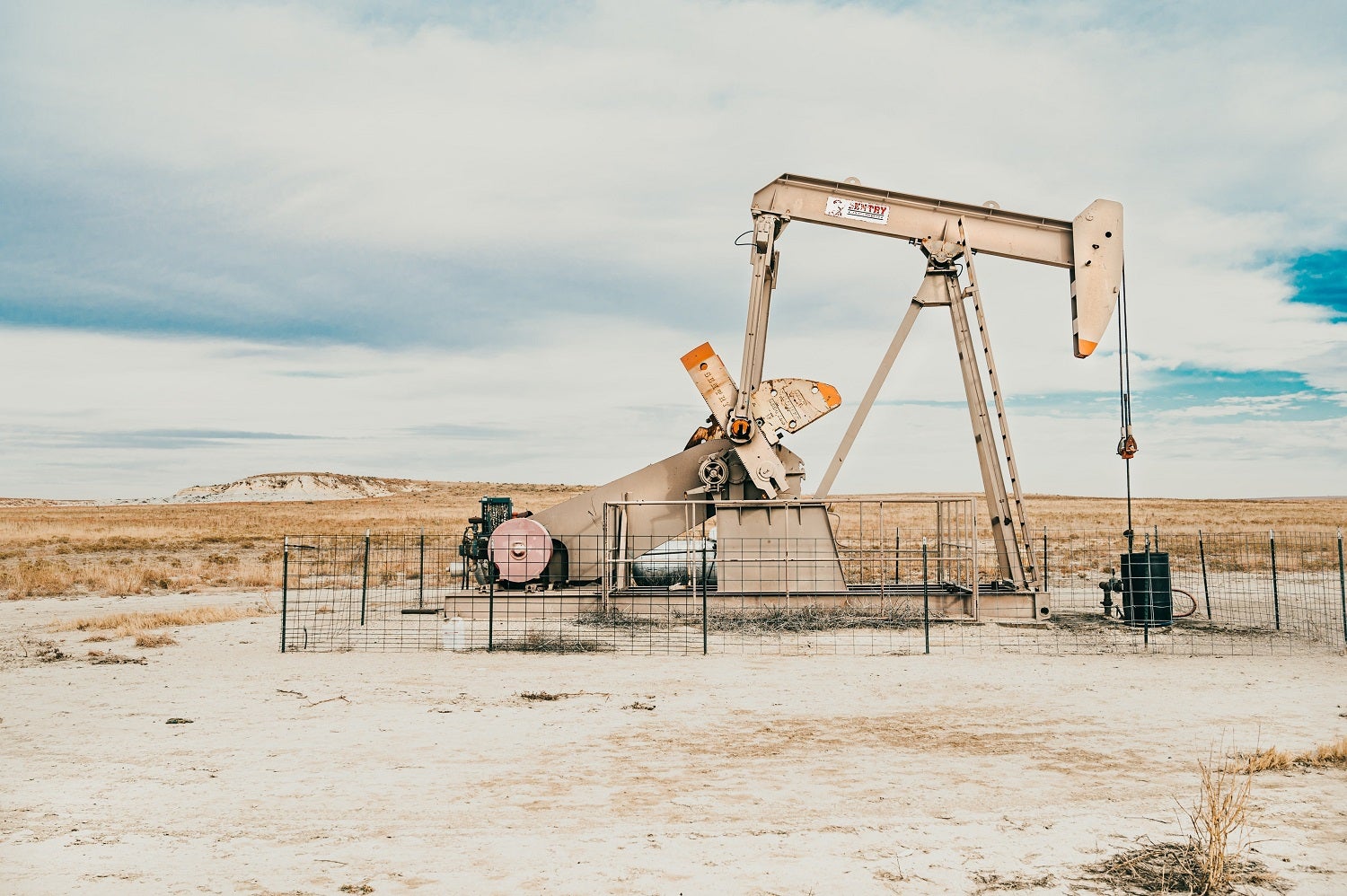 Petrofac submits lowest bid of $1.48bn for Kuwait oil project
Petrofac submits lowest bid of $1.48bn for Kuwait oil project24 October 2025
All of this is only 1% of what MEED.com has to offer
Subscribe now and unlock all the 153,671 articles on MEED.com
- All the latest news, data, and market intelligence across MENA at your fingerprints
- First-hand updates and inside information on projects, clients and competitors that matter to you
- 20 years' archive of information, data, and news for you to access at your convenience
- Strategize to succeed and minimise risks with timely analysis of current and future market trends

Related Articles
-
 Gulf LNG sector enters a new prolific phase
Gulf LNG sector enters a new prolific phase24 October 2025

Liquefied natural gas (LNG) has been produced in the GCC since the 1970s. However, it is only since the start of this decade that regional producers have begun committing tens of billions of dollars to significantly ramp up output, driven by soaring global demand for the super-chilled fuel.
The GCC is projected to add at least 80 million tonnes a year (t/y) of LNG capacity by 2030, placing it firmly among the world’s top three producing regions.
Qatar leads the Gulf’s push for LNG dominance as the region’s largest – and one of its earliest – LNG producers.
State enterprise QatarEnergy has been producing LNG from the giant North Field offshore gas reserve in the Gulf waters, which it shares with Iran, since the 1980s. QatarEnergy currently produces 77.5 million t/y of LNG from 15 processing trains, all located in a sprawling complex in Ras Laffan Industrial City.
Top spot
 QatarEnergy is on course to nearly double its LNG production to 142 million t/y by the end of the decade through its $40bn North Field LNG expansion programme.
QatarEnergy is on course to nearly double its LNG production to 142 million t/y by the end of the decade through its $40bn North Field LNG expansion programme.The energy giant is understood to have spent nearly $30bn on the first two phases of its North Field expansion – North Field East and North Field South – which will raise LNG production capacity from 77.5 million t/y to 126 million t/y by 2028. Engineering, procurement and construction (EPC) works on both projects are progressing.
QatarEnergy awarded the main EPC contracts for the North Field East project in 2021. The project aims to boost LNG output to 110 million t/y by 2025. The $13bn EPC package – covering the engineering, procurement, construction and installation of four LNG trains, each with a capacity of 8 million t/y – was awarded in February 2021 to a consortium of Japan’s Chiyoda Corporation and France’s Technip Energies.
In May 2023, QatarEnergy awarded the $10bn main EPC contract for the North Field South project to a consortium of Technip Energies and Lebanon-based Consolidated Contractors Company.
The contract includes two large LNG trains, each with a capacity of 7.8 million t/y.
Once fully operational, the first two phases of the North Field expansion will add 48 million t/y of supply to the global LNG market.
In February 2024, QatarEnergy announced the third phase of its North Field expansion – North Field West. The project will add 16 million t/y of LNG capacity through two processing trains of 8 million t/y each, following the model of earlier phases. It will source feedstock from the western zone of the offshore North Field reserve.
Progress on the North Field West project has, however, been slow, and it has remained in the pre-front-end engineering and design (pre-feed) phase since its announcement.
QatarEnergy is reportedly exploring options to fast-track it to the EPC stage.
The first two phases of the North Field expansion will add 48 million t/y to the global LNG market
 Oman progress
Oman progressOman has recently made significant progress in the global race to expand LNG production and exports. The Omani government made headlines in July last year, when it announced that majority state-owned Oman LNG would build a fourth train at its Qalhat LNG production complex in Sur.
The new LNG train will have an output capacity of 3.8 million t/y, increasing Oman LNG’s total production capacity to 15.2 million t/y when it is commissioned in 2029.
Oman LNG recently made key progress on its project to add a fourth processing train at the Sur LNG complex. The majority state-owned company has shortlisted a consortium of Chiyoda and South Korea’s Samsung C&T, Japanese contractor JGC Corporation and another consortium of Italian contractor Saipem and South Korea-based Daewoo Engineering & Construction to participate in the main tender for EPC works.
Technical and commercial bids are due in February and March 2026, respectively.
The EPC tender process began less than a year after Oman LNG awarded the feed contract to US-based consultancy KBR.
Separately, France’s TotalEnergies is studying a potential expansion of its Marsa LNG bunkering and export terminal in Oman. The move is significant considering that the first phase of the project is currently under construction in the sultanate’s northern industrial city of Sohar, and will have an output capacity of 1 million t/y.
TotalEnergies purportedly began an initial study on a potential second phase of the Marsa LNG facility earlier this year. The French energy major may consider doubling the output capacity of the LNG complex, although the plan is yet to be confirmed, according to sources.
Earlier in the year, TotalEnergies appointed Technip Energies – already the main EPC contractor on the under- construction Marsa LNG terminal – as a consultant to perform concept and feasibility studies on the proposed second expansion phase.
With Oman LNG advancing its fourth train and TotalEnergies mulling a potential doubling of LNG production in Oman, the sultanate is positioning itself as a key global LNG player by 2030.

UAE plans
Abu Dhabi National Oil Company (Adnoc) has historically been one of the GCC’s smaller LNG producers. Its subsidiary, Adnoc Gas, operates three large gas processing trains on Das Island.
 The Das Island terminal has a liquefaction and export capacity of about 6 million t/y. The first two trains, commissioned in the 1970s, provide a combined 2.9 million t/y, while the third, added in the mid-1990s, contributes 3.2 million t/y.
The Das Island terminal has a liquefaction and export capacity of about 6 million t/y. The first two trains, commissioned in the 1970s, provide a combined 2.9 million t/y, while the third, added in the mid-1990s, contributes 3.2 million t/y.Adnoc Gas will significantly expand its LNG capacity with a new greenfield terminal in Ruwais, set to come online in 2028. The terminal will add 9.6 million t/y of LNG capacity via two 4.8 million t/y trains.
Adnoc awarded the $5.5bn EPC contract in June 2024 to a consortium of Technip Energies, JGC Corporation, and NMDC Energy, coinciding with its final investment decision.
Along with the main processing trains, the Ruwais LNG complex will also feature process units, storage tanks and an export jetty for loading cargoes and LNG bunkering, as well as utilities, flare handling systems and associated buildings. The facility will ship LNG mainly to key Asian markets, such as Pakistan, India, China, South Korea and Japan.
https://image.digitalinsightresearch.in/uploads/NewsArticle/14933998/main.gif -
 NHC signs Al-Fursan project deal with South Korean firm
NHC signs Al-Fursan project deal with South Korean firm24 October 2025
Register for MEED’s 14-day trial access
Saudi Arabia’s National Housing Company (NHC) has signed a memorandum of understanding (MoU) with South Korea’s GS Engineering & Construction to build a residential project in NHC’s Al‑Fursan suburb of Riyadh.
The MoU was signed in Seoul earlier this week by Saudi Arabia’s Minister of Municipal and Rural Affairs and Housing, Majed Al‑Hogail, and NHC’s CEO, Mohammed Al‑Buty.
In an official statement published by the Saudi Press Agency, NHC said: “The MoU extends the growing Saudi-Korean partnerships, strengthened by the signing of another MoU in November 2024 to develop the Balady Platform and implement digital twins and smart city applications, contributing to urban planning development and improved quality of life.”
This is the second major project agreement NHC has signed for residential development within the Al‑Fursan district.
In March last year, NHC and Egyptian real estate developer Talaat Moustafa Group signed an agreement to develop more than 27,000 residential units at NHC’s Banan City project in the Al‑Fursan suburb.
The project will cover an area of 10 million square metres and include hospitals, schools, retail, sports facilities and other public amenities.
In 2023, NHC and Saudi Arabia’s Housing Ministry signed investment agreements totalling more than SR24bn ($6.4bn) to launch the Al-Fursan residential project.
Al‑Fursan is described as the largest scheme in terms of area and number of housing units that NHC is implementing in partnership with other real estate developers.
For the district’s first phase, 18 real estate development agreements were signed with companies including Retal Urban Development Company and Sumou Real Estate Company.
NHC also signed four consultancy contracts to manage projects and supervise implementation of phase one and the deployment of comprehensive infrastructure works.
Other deals involved the development of facilities, including commercial and recreational areas, hospitals, health and sports centres, mosques and schools.
MEED reported in 2020 that Riyadh planned to oversee the development of more than 1 million homes by 2025 to meet growing demand in the kingdom.
By 2030, the Saudi capital aims to more than double its population, from 7-8 million to 15-20 million, and become one of the 10 wealthiest cities in the world.
https://image.digitalinsightresearch.in/uploads/NewsArticle/14934006/main.jpg -
 October 2025: Data drives regional projects
October 2025: Data drives regional projects24 October 2025
Click here to download the PDF
Includes: Commodity tracker | Construction risk | Brent Spot Price | Construction output
MEED’s November 2025 report on the UAE includes:
> COMMENT: Investment shapes UAE growth story
> GOVERNMENT: Public spending ties the UAE closer together
> ECONOMY: UAE growth expansion beats expectations
> BANKING: Stability is the watchword for UAE lenders
> OIL & GAS: Adnoc strives to build long-term upstream potential
> PETROCHEMICALS: Taziz fulfils Abu Dhabi’s chemical ambitions at pace
> POWER: UAE power sector hits record $8.9bn in contracts
> WATER: Tunnel projects set pace for UAE water sector
> CONSTRUCTION: UAE construction faces delivery pressures
> TRANSPORT: $70bn infrastructure schemes underpin UAE economic expansionTo see previous issues of MEED Business Review, please click herehttps://image.digitalinsightresearch.in/uploads/NewsArticle/14933968/main.gif -
 Oman tenders industrial city infrastructure contracts
Oman tenders industrial city infrastructure contracts24 October 2025

Oman’s Public Establishment for Industrial Estates (Madayn) has issued two tenders for infrastructure development works at Al‑Suwaiq Industrial City in Al‑Batinah North Governorate and Madha Industrial City in Musandam Governorate.
Madayn issued a tender on 21 October inviting companies to bid for a contract to develop the first phase of the infrastructure and utilities network at Al‑Suwaiq Industrial City.
The scope covers construction of a building, greenhouses, roads, water network, electricity and sewage networks, and other associated facilities.
The bid submission deadline is 30 November.
The tender for construction of infrastructure works at Madha Industrial City was also issued on 21 October, with a submission deadline of 30 November.
In December 2023, Madayn inaugurated two projects at Al-Mazunah Free Zone valued at RO9.5m ($25m), including a facility building project and phase one package two and phases two and three at Al-Mazunah Free Zone.
Madayn, OQ Refineries & Petrochemical Industries and the Industrial Innovation Academy signed an agreement in June 2022 to set up Ladayn Polymer Park in Sohar.
At that time, Madayn also signed seven land‑usufruct agreements with an extendable duration of 33 years at reduced prices with the investors.
According to a report from UK-based data analytics provider GlobalData, the output of the Omani construction industry is expected to register annual growth of 4.2% from 2025 to 2027, supported by investments in economic zones, renewable energy, manufacturing and tourism projects under Vision 2040.
https://image.digitalinsightresearch.in/uploads/NewsArticle/14933905/main.jpg -
 Petrofac submits lowest bid of $1.48bn for Kuwait oil project
Petrofac submits lowest bid of $1.48bn for Kuwait oil project24 October 2025
Register for MEED’s 14-day trial access
UK‑based Petrofac has submitted the lowest bid for a contract to install Water Injection Plant 4 (WIP‑4) in south Kuwait.
Petrofac submitted a bid of KD453,736,367 ($1.48bn), which is 7% lower than the KD488,378,247 ($1.59bn) submitted by India’s Larsen & Toubro, the only other company to bid for the project.
The project’s bid deadline was postponed at least 14 times before prices were ultimately submitted.
The main contract tender was originally issued by Kuwait Oil Company (KOC) on 11 August 2024, with a bid submission deadline of 10 November 2024.
The project includes:
- Construction of a water injection plant called WIP-4
- Installation of safety and security systems
- Laying of pipelines
- Installation of oil gathering systems
- Installation of the new well pads
- Construction of associated facilities
When it was first tendered in August last year, nine companies were qualified to bid. They were:
- Samsung Engineering & Construction (South Korea)
- Sinopec Luoyand Engineering Company (China)
- Hyundai Engineering & Construction Company (South Korea)
- Sinopec Engineering Incorporation (China)
- Larsen & Toubro (India)
- Petrofac International (UK)
- Saipem (Italy)
- Daewoo Engineering & Construction (South Korea)
- Tecnicas Reunidas (Spain)
Kuwait is currently trying to boost project activity in its upstream sector.
The country’s national oil company, Kuwait Petroleum Corporation (KPC), is aiming to increase oil production capacity to 4 million barrels a day by 2035.
https://image.digitalinsightresearch.in/uploads/NewsArticle/14933876/main.jpg




